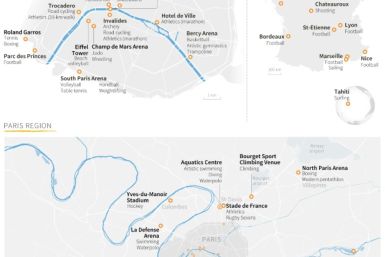Daily Dollar Forecast 07/26/2012
Australian Dollar
In what proved to be a slightly softer than expected reading Australia’s headline Consumer Inflation accelerated to 0.5 percent in the second quarter this year, taking the annual rate up to 1.2 percent. With the median forecast expecting prices to rise by around 0.6 percent, investors initially sold the Aussie to an intraday low of 1.0173 against its US Counterpart amid speculation that such readings will give the RBA even more scope to lower interest rates sooner rather than later. Despite its slow start, the Australian dollar managed to recover all of its earlier losses, rallying off the back of higher equities driven by further optimism that the US Fed Reserve may still yet roll out further stimulus as the US economy showed further signs of weakness in the form of New Home Sale figures. After another busy 24 hour period the Aussie dollar opens noticeably stronger at 1.0312 this morning
We expect a range today of 1.0260 – 1.0350
New Zealand Dollar
Following a disappointing start to the day in which the Kiwi traded as low as 0.7806 against its US Counterpart, investors took a liking to the higher-yielding asset during offshore trade as weaker than expected New Home Sales figures in the US triggered a large move away from the Greenback. Whilst Greenback weakness was the overriding theme attention has quickly turned to The Reserve Bank of New Zealand who at time of writing has left kept the official cash rate unchanged at 2.5 percent. With Governor Alan Bollard reiterating that the outlook for the nations major trading partners remains poor the overall impact on the currency to this point has been relatively muted. Opening a full cent Stronger against the Greenback the Kiwi currently buys 79.08 US Cents
We expect a range today of 0.7860 – 0.7940
Great British Pound:
Driving the Great British Pound lower yesterday Gross domestic product fell 0.7 percent from the first quarter, well below the expected reading of negative 0.2 percent. Increasing pressures on the PM David Cameron to abandon Britain’s biggest budget squeeze since World War II, the larger than expected drop shows signs of deepening recession essentially ending any hope that average growth this year will be able to average above zero. Weakening against 13 of its 16 major counterparties the Sterling opens a full half a cent weaker against the Greenback at 1.5497. Meanwhile on the cross the picture doesn’t get any prettier with even larger losses witnessed against both the Aussie (1.5027) and the Kiwi (1.9600)
We expect a range today of 1.4990 – 1.5070
Majors:
Global Stocks enjoyed a slightly flatter day when compared to the heavy losses accumulated in the early parts of this week. Dictating currency moves overnight US New Home Sale figures came in well below expectation, falling in June from a previous two year high. Indicating that any ongoing recovery is likely to be an uneven one the Greenback was sold across the board overnight as bets again increased that the US Fed Reserve will roll out further stimulus given the apparent lack of growth within the world’s largest economy. Helping the cause of the Euro in comparison the shared currency snapped five days of losses as it opens more than a full one US Cents stronger at 1.2152 against the Greenback. Whilst in Europe a business confidence gauge in Germany slipped in July to levels not seen since March 2010 whilst we also heard of news that Greece’s PM Antonis Samaras is set to meet EU Officials in Athens over the coming days in an attempt to calm fears that they will not be able to meet debt commitments. Looking ahead this week whilst Europe is likely to be the key driver behind global risk sentiment investors will also be keeping a very close eye on advanced US GDP figures, due for release Friday
Data releases
AUD:
No Data Today
NZD: Official Cash Rate
JPY:
BOJ Gov Shirakawa Speaks
GBP: No Data Today
EUR:
Gfk German Consumer Climate, M3 Money Supply y/y
USD:
Core Durable Goods Orders m/m, Unemployment Claims, Pending Home Sales m/m






